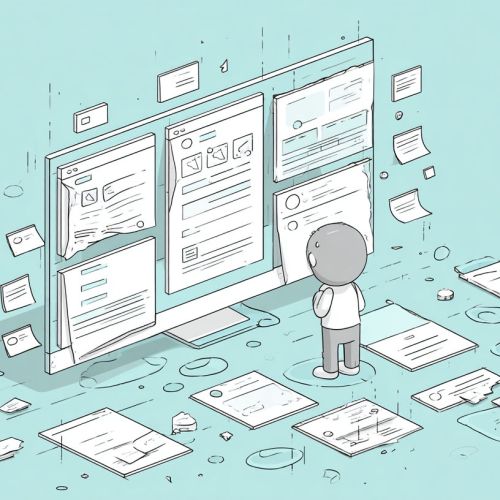In the digital marketplace, staying ahead of your competitors requires more than intuition and basic research. AI competitive analysis is revolutionizing how marketing leaders uncover insights and make strategic decisions. By leveraging artificial intelligence, companies can monitor competitors more effectively, anticipate market shifts, and respond faster with precision.
Imagine a leading consumer electronics brand that used AI-driven competitor benchmarking to uncover a stealth marketing campaign by a rival. This insight prompted an agile pivot in their product launch strategy, ultimately capturing significant market share that would have otherwise slipped away. This real-world scenario exemplifies the kind of competitive edge AI competitive analysis provides.
In this article, we explore how AI competitive analysis transforms the way businesses understand their competitors, offering marketing and technology leaders actionable guidance to implement these capabilities in their own organizations.
The Evolution of Competitive Analysis: From Manual to AI-Powered
For decades, competitive analysis relied heavily on manual research methods—scouring industry reports, monitoring press releases, sifting through public financials, and absorbing fragmented social media chatter. While foundational, this approach posed huge limitations. It was slow, labor-intensive, and often missed subtle or emerging signals, leaving decision-makers reacting too late to challenges or opportunities.
The landscape has changed thanks to the development of AI competitive intelligence tools. Big data infrastructure enables the compilation of massive datasets. Machine learning (ML) algorithms find patterns invisible to the human eye, and natural language processing (NLP) extracts meaning from unstructured textual data.
Key advancements include:
- Big Data Integration: AI consumes terabytes of data from websites, social platforms, review forums, and advertising networks to capture a holistic competitor snapshot.
- Machine Learning for Market Analysis: ML models analyze trends, competitor behaviors, pricing strategies, and customer sentiments to predict likely next moves.
- Natural Language Processing: Enables sentiment and topic detection in competitor communications, unearthing public perception trends spanning thousands of online conversations.
The speed and scale AI delivers mean analysis once performed over weeks can now transpire in real-time. According to Gartner’s report, 75% of Analytics Content to Use GenAI for Enhanced Contextual Intelligence by 2027.
Case Study: Netflix vs Blockbuster
Netflix’s meteoric rise was fueled by AI-driven recommendations and competitor analysis. While Blockbuster clung to brick-and-mortar rentals, Netflix used data insights to identify customer preferences and shift quickly to streaming. This AI-informed strategy was pivotal in outpacing its competition and redefining the market.
AI-powered competitive analysis is no longer a nice-to-have but a necessity in today’s cutthroat environment. It reduces blind spots, empowers deeper intelligence gathering, and fuels proactive market strategies.
Key Capabilities of AI in Competitive Analysis
AI competitive analysis delivers a suite of capabilities that enable marketing leaders to move beyond reactive strategies and embrace proactive, data-driven decision-making.
Automated Web Scraping and Real-Time Competitor Monitoring
Manual data collection is replaced by AI tools that continuously scan competitor websites, pricing pages, product catalogs, and advertising campaigns. Real-time competitor monitoring AI flags new product launches, shifts in messaging, and pricing changes with minimal delay.
This continuous feed enables businesses to adjust offers or messaging on the fly, rather than discovering competitor moves after the damage is done. For example, AI monitoring can catch when a rival initiates a major discount campaign, allowing your team to respond rapidly.
Predictive Analytics for Anticipating Competitor Moves
One of the most transformative capabilities is predictive analytics for competitive edge. AI models analyze historical competitor behaviors, market conditions, and seasonality to forecast competitor initiatives such as product launches, promotional pushes, or geographic expansions.
Predictive analytics empowers marketing leaders not just to respond but to preempt and outmaneuver rivals. This capability shifts organizations from reactive to anticipatory in strategic planning.
Sentiment Analysis Across Reviews, Forums, and Social Media
Beyond monitoring competitor actions, AI performs sentiment analysis to gauge market reaction and consumer perception of competitors. By analyzing reviews, online forums, and social media conversations, AI uncovers emerging product weaknesses, brand reputation risks, or shifting customer preferences.
This nuanced understanding helps organizations tailor their messaging to exploit competitor vulnerabilities or highlight their own differentiators.
Visual Recognition for Product and Brand Analysis
Visual recognition technology allows companies to analyze competitors’ product images, design trends, packaging changes, and branding updates. AI can detect visual patterns, new logos, or subtle rebranding that might signal repositioning.
For instance, if a rival subtly adjusts product packaging to appeal to a new demographic segment, AI-powered competitor benchmarking can reveal this shift faster than traditional methods.
Expert Insight
John Matthews, CMO at a leading AI marketing firm, states:
“AI has transformed competitive analysis from an annual or quarterly exercise into a continuous strategic advantage. The ability to combine disparate data sources – text, images, pricing, social sentiment—and analyze at scale lets marketers make smarter, faster decisions that directly impact growth.”
The fusion of these AI capabilities empowers businesses to develop richer, timelier, and more actionable competitive intelligence.
Practical Steps to Implement AI in Competitive Analysis
Implementing AI competitive analysis in your organization requires a thoughtful approach to technology, people, and processes. Here is a roadmap to guide your journey.
1. Audit Current Competitive Intelligence Practices
Begin by evaluating your existing competitive intelligence workflows. Identify where manual research causes delays or lacks depth. Recognize which data sources you currently use and which are missing. This audit reveals clear integration points for AI technologies.
2. Select and Customize AI Competitive Intelligence Tools
Choose AI competitive intelligence tools that fit your business needs and scale. Popular options include Crayon for comprehensive market intelligence, SimilarWeb for digital traffic trends, and SEMrush for competitive SEO and advertising insights. Each platform offers varying levels of automation, monitoring, and predictive features.
Assess how these tools can be customized, for example, setting up real-time alerts on competitor product launches or integrating competitor pricing data in your BI dashboards.
3. Train Cross-Functional Teams to Act on AI Insights
Adoption succeeds when marketing, product, and strategy teams understand how to interpret AI-generated data. Conduct training sessions highlighting use cases and behavioral changes required to leverage AI insights effectively.
Encourage collaborative discussions to transform data points into strategic actions—whether it’s revising pricing, tightening messaging, or accelerating product updates.
4. Set Up Dashboards and Automated Alerts
Create centralized dashboards displaying key competitor metrics sourced from AI platforms. Configure automated alerts to notify relevant stakeholders of critical competitor moves in real-time, such as aggressive discounting or new market entries.
By simplifying data visualization and alerting, your teams can stay agile and responsive.
5. Example: Mid-Sized SaaS Firm’s Success Story
A mid-sized SaaS company integrated AI-driven competitor benchmarking tools to track close rivals’ pricing changes and product announcements. Within weeks, their AI system detected an early competitor discount rollout targeted at enterprise clients.
Armed with this insight, the SaaS firm proactively launched a value-based pricing campaign and tailored sales incentives. They not only prevented customer churn but gained several clients seeking more flexible packages.
This example underlines how implementing AI in competitive analysis can produce measurable market advantages.
Common Pitfalls and Ethical Considerations
While AI competitive analysis offers immense benefits, organizations must navigate risks and ethical complexities to maintain trust and compliance.
Data Privacy Laws and Boundaries
Strict regulations like GDPR (Europe) and CCPA (California) govern data collection and use. Competitor data gathering must respect these laws, avoiding unauthorized scraping of personal or protected data.
Ensure your AI competitive intelligence tools adhere to legal standards and limit monitoring to publicly available information. Engaging a compliance officer to review data strategies mitigates legal risks.
Risks of Algorithmic Bias and Over-Reliance on AI
AI models can inadvertently perpetuate biases present in source data. Decision-makers should avoid relying blindly on AI outputs without human validation. Cross-checking findings with domain expertise prevents misguided conclusions.
Combining AI-driven analysis with human judgment yields the most reliable strategic insights.
Ensuring Data Quality and Avoiding Misinformation
AI systems depend on quality input data. Poor data leads to poor insights. Verify your data sources and review AI-generated signals to identify potential misinformation or manipulated competitor signals aimed at deception.
Establish data governance frameworks to maintain integrity and accountability.
Ethical Guidelines for Competitive Intelligence
Ethical competitive intelligence involves transparency about data sources and boundaries, avoiding corporate espionage or unethical tactics. Companies should foster a culture that prioritizes fair competition, strategic innovation, and respect for competitor privacy.
Legal counsel can provide tailored guidelines appropriate to your industry and geography.
Future Trends: Where AI Competitive Analysis Is Headed
The future of AI competitive analysis promises even greater sophistication and accessibility.
Multimodal AI for Unified Analytics
Emerging multimodal AI combines text, images, audio, and video analytics to synthesize data streams into holistic competitor profiles. Imagine monitoring competitor product videos, social media influencers, and webinar presentations all in one predictive analytic platform.
This integrated approach enhances situational awareness and richer intelligence.
Collaborative Intelligence: Human Plus AI
Rather than AI replacing analysts, hybrid models emerge wherein AI augments human expertise. Collaborative intelligence uses AI to highlight anomalies or trends, with humans applying business context, creativity, and intuition to refine strategy.
This partnership boosts accuracy and strategic depth.
Democratization of AI Competitive Intelligence Tools
Lower costs and cloud delivery models make AI competitive intelligence accessible to SMBs and startups. No longer exclusive to large enterprises, more businesses can leverage AI-driven competitor benchmarking to punch above their weight.
This democratization fosters innovation and dynamic competition across industries.
Predictive Scenario Modeling
Next-generation AI will enable scenario simulations predicting hypothetical competitor moves and market reactions. Companies can experiment with competitive responses virtually before committing resources, embracing data-driven strategic foresight.
Market Growth Projections
According to MarketsandMarkets, AI in marketing is projected to grow to $107 billion by 2028. This expansion reflects increasing investments in AI capabilities including competitive analysis tools, highlighting its strategic importance.
Conclusion
AI competitive analysis represents a paradigm shift in how marketing leaders gather intelligence, anticipate market developments, and craft winning strategies. By automating data gathering, applying predictive analytics, and delivering real-time competitor monitoring AI, AI tools empower businesses to move faster and more decisively.
Today’s digital markets demand continuous vigilance and agility. Organizations that embrace AI-driven competitor benchmarking and machine learning for market analysis position themselves to not only keep pace but to seize first-mover advantages.
As AI technologies evolve, future competitive analysis will become even more nuanced, integrating multimodal data and human expertise to create seamless, actionable insights.
Are you ready to give your team an AI edge over your industry rivals? How has AI competitive analysis transformed your decision-making process? Share your experiences or challenges in the comments below.






